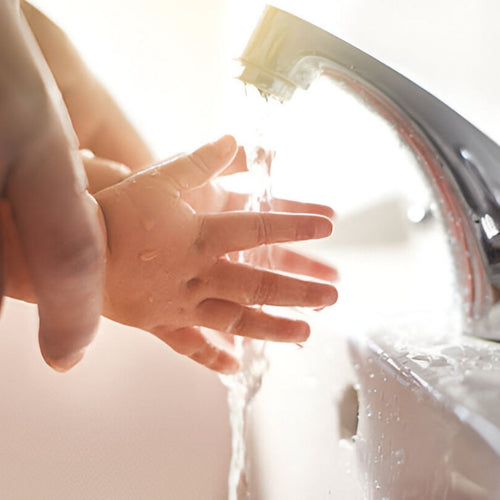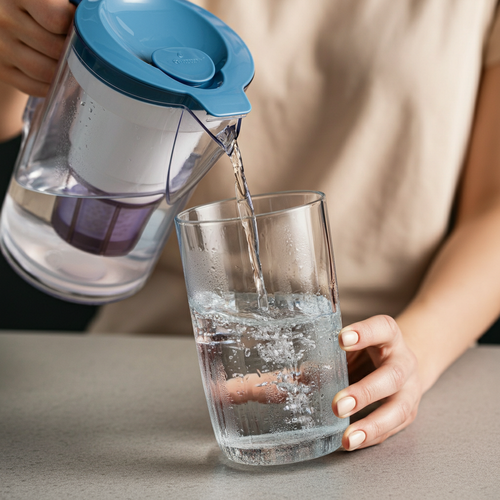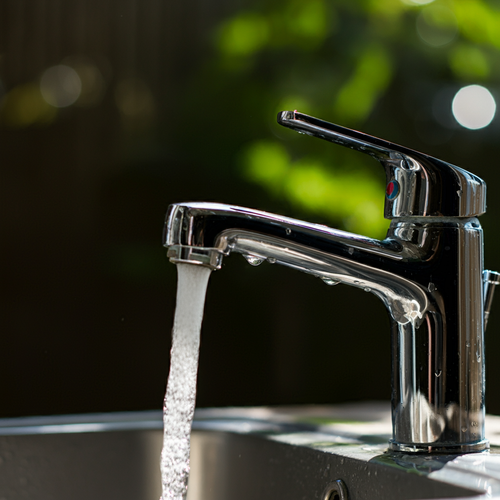Yes, there are drawbacks to using reverse osmosis (RO) water filtration. While RO effectively purifies water, it's important to understand its limitations. These can include significant water waste, higher costs compared to other filtration methods, ongoing maintenance requirements, and the removal of beneficial minerals. At SoftPro Water Systems, we believe in transparency and providing a complete picture of your water treatment options.
How Does Reverse Osmosis Work?
Reverse osmosis uses a semi-permeable membrane to remove contaminants from water. This membrane allows water molecules to pass through while blocking larger molecules like dissolved salts, minerals, and impurities. Pressure is applied to force water through the membrane, leaving behind concentrated contaminants in a wastewater stream. The purified water, called permeate, is then collected.
This process effectively removes a wide range of contaminants, including:
- Total dissolved solids (TDS): Minerals, salts, and other dissolved substances affecting taste, odor, and safety.
- Chlorine: This common disinfectant can leave an unpleasant taste and odor.
- Fluoride: While beneficial for dental health, some people prefer to remove it.
- Heavy metals: Lead, mercury, and arsenic, which can pose serious health risks.
- Pesticides and herbicides: These chemicals can contaminate water sources.
- Bacteria and viruses: RO membranes can remove some, but not all, microorganisms.
It's important to note that this very process—the separation of water molecules from contaminants—is what leads to some of the drawbacks of RO, such as wastewater production and the removal of beneficial minerals.
What Are the Drawbacks of Reverse Osmosis Systems?
Wastewater Production
A significant drawback of RO systems is the amount of wastewater produced. For every gallon of purified water generated, a typical RO system wastes 3-4 gallons. This wastewater, also known as reject water, contains the concentrated contaminants removed during filtration.
This can be a concern, especially in areas with water scarcity. However, we can mitigate this:
- Permeate pumps: These increase water pressure, improving efficiency and reducing waste.
- Water-saving RO systems: Newer models are designed to be more water-efficient, with lower wastewater ratios.
For example, the SoftPro RO Water Filter System boasts a 1:1 waste-to-pure water ratio, significantly reducing water waste compared to traditional systems.
Cost
RO systems can be more expensive than other filtration methods. The initial cost and ongoing costs (filter replacements, membrane replacement, maintenance) can add up.
Filter cartridges typically need replacement every 6-12 months. The RO membrane lasts 2-5 years but is expensive to replace.
While RO systems require a higher initial investment and ongoing expenses compared to simpler methods like pitcher filters or faucet filters, they offer a higher level of purification and remove a wider range of contaminants. This trade-off is essential to consider when making your decision.
Maintenance
RO systems require regular maintenance for optimal performance:
- Replacing filter cartridges: These remove sediment, chlorine, and other impurities before water reaches the RO membrane.
- Replacing the RO membrane: This ensures efficient filtration over time.
- Checking for leaks: Regularly inspect the system, especially around connections.
- Sanitizing the system: This prevents bacterial growth.
RO systems require more maintenance than simpler systems, but the higher level of purification and broader contaminant removal often outweigh this for those seeking optimal water quality.
Demineralization
Reverse osmosis removes beneficial minerals like calcium and magnesium. While this improves taste and prevents scaling, it can lead to demineralized water, which may have health implications.
The World Health Organization (WHO) states, "drinking water should contain minimum levels of certain essential minerals," crucial for bodily functions.
Many RO systems now include remineralization filters, adding back essential minerals to the purified water. This ensures it is both safe and healthy.
Slow Flow Rate
RO systems have a slower flow rate than other methods because water is forced through the RO membrane under pressure. This can be inconvenient when filling containers or using a refrigerator dispenser, but it's a trade-off for the high level of purification.
Is Reverse Osmosis Right for Me?
Whether reverse osmosis is right for you depends on:
- Water quality: High TDS, chlorine, or other contaminants make RO a good option.
- Specific contaminants: RO can remove heavy metals or pesticides.
- Budget: Consider the initial and ongoing costs.
- Household needs: Consider water usage and if the slow flow rate is acceptable.
- Environmental concerns: Consider water-saving RO systems or alternatives.
Alternatives to RO include:
- Activated carbon filters: Remove chlorine, sediment, and other impurities.
- UV filters: Kill bacteria and viruses.
- Whole-house filters: Provide filtration for your entire home.
At SoftPro Water Systems, we offer various water filtration solutions. Contact us for a free consultation to discuss the best options for your home.
Reverse Osmosis FAQs
Does reverse osmosis remove fluoride?
Yes, reverse osmosis effectively removes fluoride. The Water Quality Association (WQA) states, "RO membranes can remove 85-95% of fluoride from water."
Can I install an RO system myself?
While possible, professional installation is recommended to ensure proper setup and prevent leaks.
How long does an RO membrane last?
Lifespan depends on water quality, usage, and maintenance. Typically, it's 2-5 years. Regular pre-filter replacement and system maintenance help extend its life.
Choosing the Right Reverse Osmosis System
Consider these factors:
- NSF Certification: Ensures the system meets safety and performance standards.
- Water Efficiency: Minimize waste with features like permeate pumps and high-efficiency membranes.
- Remineralization: Address demineralized water with a built-in filter.
- Capacity: Choose a system that meets your household needs.
Real-World Examples:
- SoftPro RO System: High efficiency, low wastewater production, permeate pump, and remineralization filter.
- APEC ROES-50: Excellent filtration, compact design, remineralization filter.
- Home Master TMAFC-ERP: This system is known for its effectiveness in treating well water, which often has high levels of iron, sulfur, and TDS. It includes a permeate pump and a remineralization filter.
How to Choose the Right RO System for Your Home
Choosing the right RO system can seem complicated, but by understanding your needs and the available options, you can make an informed decision.
- Identify Your Water Quality Concerns:
Start by identifying your specific water quality concerns. What contaminants are you most concerned about? Do you have high levels of TDS, chlorine, or heavy metals? Is your water hard or soft?
You can use a home water testing kit or have your water professionally tested to determine its quality and identify any specific contaminants.
- Consider Your Household Needs:
How much water do you use daily? How many people are in your household? Do you need a high-capacity system for a large family or a smaller system for a single person?
- Evaluate Your Budget:
RO systems range in price from a few hundred to over a thousand dollars. Determine your budget and look for systems that offer the best value for your needs.
- Look for Important Features:
- NSF Certification: Ensure the system meets safety and performance standards.
- Water Efficiency: Choose a system with a high efficiency rating and features like a permeate pump.
- Remineralization: Consider a system with a remineralization filter if you are concerned about the removal of beneficial minerals.
- Ease of Installation and Maintenance: Look for systems that are easy to install and maintain.
- Read Reviews and Compare Products:
Read online reviews and compare different RO systems before making a purchase. Pay attention to user feedback on performance, reliability, and customer service.
By following these steps, you can choose an RO system that effectively addresses your water quality concerns and meets your household needs.
Troubleshooting Common RO Problems
Even with regular maintenance, RO systems can occasionally experience problems. Here are some common issues and how to troubleshoot them:
- Low Water Pressure: Check the water supply line and the system's pre-filters for clogs. You may also need to replace the RO membrane if it's nearing the end of its lifespan.
- Leaks: Inspect all connections and fittings for leaks. Tighten any loose connections or replace damaged parts.
- Strange Taste or Odor: This could indicate a problem with the pre-filters, the RO membrane, or the storage tank. Replace the filters and sanitize the tank. If the problem persists, you may need to have the system professionally serviced.
- No Water Production: Check the water supply line, the system's power supply, and the shut-off valve. If these are all functioning correctly, the RO membrane may need to be replaced.
If you are unable to resolve the problem yourself, contact a qualified plumber or water treatment specialist for assistance.
DIY RO Maintenance: A Step-by-Step Guide
Regular maintenance is essential to ensure the optimal performance and longevity of your RO system. Here's a step-by-step guide to performing basic DIY maintenance:
- Gather Your Supplies:
You will need:
- Replacement filter cartridges (specific to your RO system model)
- A wrench or filter housing wrench (if applicable)
- A bucket or container to catch water
- A clean cloth
- Turn Off the Water Supply:
Locate the shut-off valve for your RO system and turn it off. This will prevent water from flowing through the system during maintenance.
- Release Pressure:
Open the faucet on your RO system to release any pressure in the system.
- Remove the Filter Housings:
Use a wrench or filter housing wrench to loosen and remove the filter housings.
- Replace the Filter Cartridges:
Remove the old filter cartridges and discard them. Insert the new filter cartridges, ensuring they are properly seated in the housings.
- Reassemble the Filter Housings:
Tighten the filter housings securely.
- Turn On the Water Supply:
Slowly turn the water supply back on.
- Check for Leaks:
Inspect all connections and fittings for leaks. Tighten any loose connections or replace damaged parts.
- Flush the System:
Run water through the RO system for several minutes to flush out any air or debris.
- Sanitize the Storage Tank:
Follow the manufacturer's instructions for sanitizing the storage tank. This typically involves adding a sanitizing solution to the tank and letting it sit for a specified period.
Making Informed Choices About Reverse Osmosis
Reverse osmosis is a highly effective water purification method, but it's essential to understand its limitations and make informed decisions based on your specific needs and priorities. Here's a recap of the key takeaways:
- Wastewater: RO systems produce wastewater, but this can be mitigated with efficient systems and permeate pumps.
- Cost: RO can be more expensive than other methods, but it offers a higher level of purification.
- Maintenance: Regular filter and membrane replacements are necessary.
- Demineralization: RO removes beneficial minerals, but remineralization filters can address this.
- Alternatives: Explore other filtration methods like activated carbon, UV, or whole-house filters if RO doesn't suit your needs.
By carefully considering these factors, you can choose the best water filtration solution for your home and enjoy the benefits of clean, healthy water.
Want to learn more about your water filtration options?
- Visit our website: Explore our range of water softeners, water filters, and reverse osmosis systems at www.softprowatersystems.com
- Get in Touch with Us: Schedule a free consultation with our water treatment experts to discuss your needs and find the perfect solution for your home.


















![Aldex Premium 10% Cross Link Resin for Water Softener [High Capacity]-SoftPro® Water Systems](http://www.softprowatersystems.com/cdn/shop/files/Aldex_10_Cross_Link_Resin_Premium_High_Capacity_for_Water_Softener_600x.jpg?v=1735853599)






















